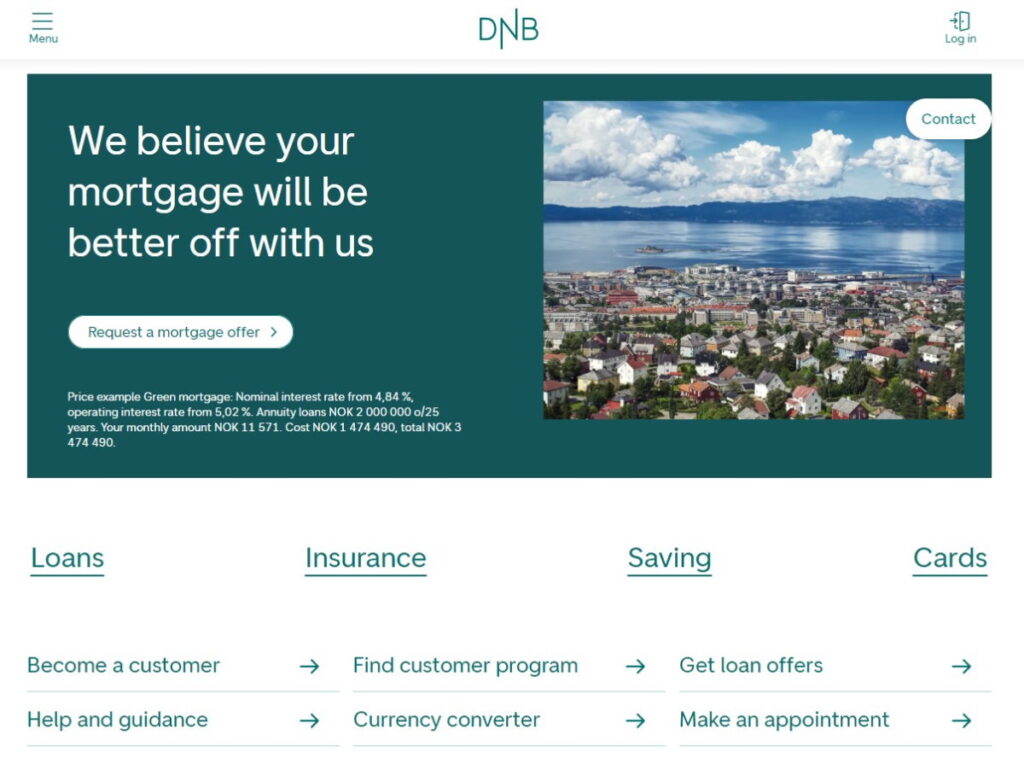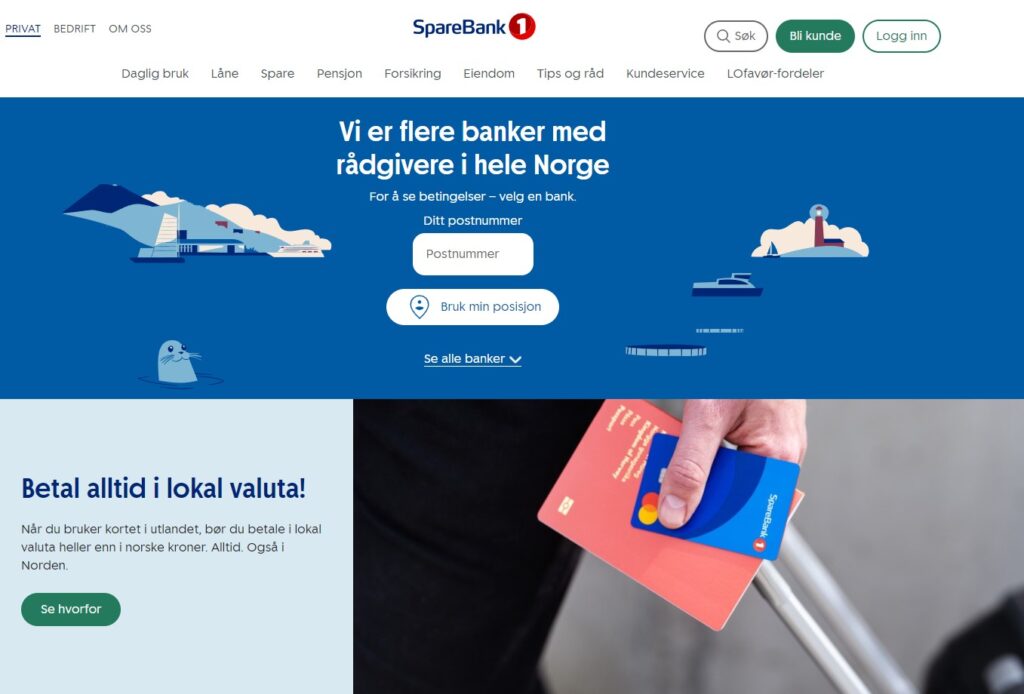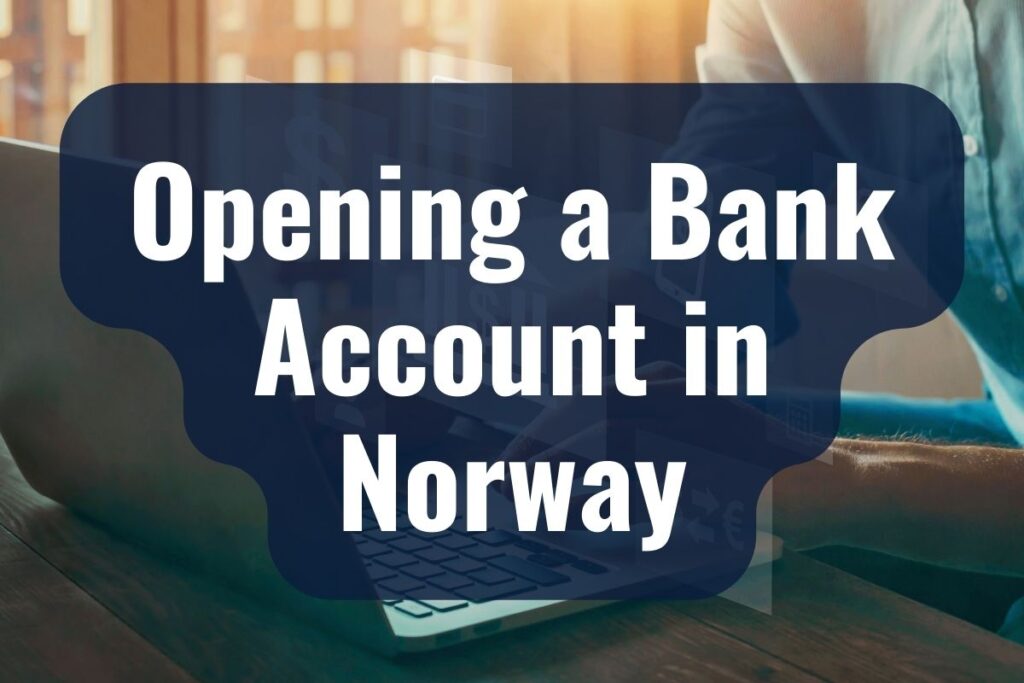The Norwegian banking system is efficient, robust, and highly digitalized, but it can be slightly daunting for foreigners, especially if you’re not fluent in Norwegian. So, how do you go about choosing the right bank? What are the factors you need to consider, and what options are available to you?
We recommend
Introducing The Wise Account: Your Ultimate Solution for Managing Over 40 Currencies, Including NOK.
Take Control of Your Global Finances Today!
Disclosure: We receive a commission if you create an account through this link at no additional cost to you.
This guide will take you through the ins and outs of banking in Norway. We’ll examine some of the top banks for foreigners, looking at factors such as English-language services, fees, ease of account opening, and additional services. We’ll also provide a step-by-step guide on opening a bank account in Norway, demystify common banking terms, and offer tips on managing your money effectively.
- Several banks in Norway cater to foreigners with English-language services and friendly banking terms.
- Choosing a bank in Norway requires considering factors like English-language support, fees, digital banking services, and additional features.
- Opening a bank account in Norway involves gathering necessary documents, choosing a bank, visiting a branch, and obtaining a BankID.
- Understanding essential Norwegian banking terms can make your banking experience smoother.
Top Banks in Norway for Foreigners
Norway’s banking landscape is filled with several established institutions, each offering a range of services designed to cater to a variety of needs. However, not all banks are created equal, especially when considering the needs of non-Norwegian speakers.
DNB (DnB NOR)
💡 Tip: DNB’s website is fully available in English.

As Norway’s largest financial services group, DNB is well-positioned to cater to foreigners. Their services are available in English, including their online platform and customer support. DNB offers a variety of accounts, loans, insurance, and investment options. Fees are competitive, but it’s always worth checking for any changes.
Nordea Bank

Nordea is another major bank in Norway, with a strong emphasis on digital banking. Its English-language website and mobile app are user-friendly and intuitive, making banking tasks a breeze even for those not fluent in Norwegian. Nordea provides a comprehensive suite of services, from everyday banking to investment options.
SpareBank 1

A union of several local Norwegian savings banks, SpareBank 1 provides a local feel with the robustness of a larger institution. They have English language services and a wide variety of financial products. As a savings bank, their interest rates can be attractive, especially for those planning to save.
Handelsbanken
💡 Tip: Handelsbankens’s website is fully available in English.

A Swedish bank with a substantial presence in Norway, Handelsbanken is known for its personalized customer service. They offer English language services, and while they may not be as big as DNB or Nordea, their approach to customer service makes them a worthy consideration for foreigners.
Danske Bank

Originally from Denmark, Danske Bank has a significant presence in Norway. They provide services in English and offer a variety of financial products. Their digital tools are user-friendly, making banking tasks straightforward even if you’re not a tech expert.
Remember, when choosing a bank, it’s important to consider not only the availability of English-language services but also the fees, the ease of account opening, and the availability of additional services that fit your needs. It’s always a good idea to visit the banks’ websites or call their customer service to get the most up-to-date information.
Criteria for Choosing a Bank in Norway

Choosing the right bank in Norway as a foreigner isn’t just about picking one with the most branches or the slickest online ads. You need to look a bit deeper, considering several factors that could significantly affect your banking experience. Let’s explore these crucial elements in more detail:
Availability of English-Language Services
Not everyone speaks Norwegian, and even if you’re learning, banking terminology can be tough to master. Look for a bank that offers its services, including online banking and customer service, in English. This will make your banking experience less complicated and more effective.
Ease of Opening an Account as a Foreigner
Some banks make it relatively simple for foreigners to open an account, while others may have more complex requirements. Ease of account opening can be an essential criterion to consider, especially if you’re new to the country and need to get your finances in order quickly.
Fees
Banking fees vary from one institution to another. These may include monthly service charges, ATM withdrawal fees, international transaction fees, and so on. Consider these carefully as they can add up over time and eat into your funds.
Interest Rates
If you plan to save or take out a loan, the interest rates offered by the bank become essential. Higher savings interest rates mean more earnings, while lower loan interest rates mean less debt.
Availability of Additional Services
Apart from regular banking, you may need additional services such as credit cards, loans, insurance, or investment opportunities. A bank that offers a wide range of services can be beneficial in the long run, providing a one-stop solution for your financial needs.
Related: See our recommended credit cards in Norway for foreigners
Step-by-Step Guide to Opening a Bank Account in Norway

Moving to a new country involves many steps, and one of the most critical is setting up a bank account. Here’s a simple step-by-step guide on how you can open a bank account in Norway. The process may vary slightly from bank to bank, but these steps provide a general framework:
1. Gather Necessary Documents
To open a bank account in Norway, you’ll typically need your passport, a Norwegian identification number (D-nummer or personnummer), proof of address (like a utility bill or rental agreement), and proof of income or student status.
2. Choose Your Bank
After comparing different banks based on the criteria we discussed earlier, select the one that fits your needs best. Remember to consider the availability of English-language services, fees, ease of account opening, and additional services.
3. Visit the Bank
Most banks require you to visit a branch in person to open an account. Call ahead or check their website to see if you need to make an appointment. Don’t forget to bring all the necessary documents with you.
4. Complete the Application
The bank staff will help you complete the application process. This will typically involve providing personal information, choosing the type of account you want to open, and agreeing to the bank’s terms and conditions.
5. Get Your BankID
BankID is a personal electronic ID and signature solution that is used widely in Norway. It allows you to authenticate yourself when using online services or sign electronic documents. The bank will guide you through the process of getting your BankID.
6. Wait for Confirmation
Once you’ve completed the application process, the bank will need some time to verify your details. When everything is in order, they’ll send you confirmation, along with your account details and instructions on how to use your account.
Important Banking Terms Explained

Understanding banking terms can be daunting, especially when you’re dealing with a foreign language. To help make your banking experience in Norway more manageable, we’ve translated some essential banking terms from Norwegian to English:
- Bankkonto (Bank Account): This is where you deposit and withdraw money. It’s the core of your relationship with any bank.
- Innskudd (Deposit): This is the money you put into your bank account.
- Uttak (Withdrawal): This is the money you take out from your bank account.
- Nettbank (Online Banking): This refers to managing your bank account via the internet, either through a computer or a mobile app.
- BankID: This is an electronic identification system used by Norwegian banks. It allows you to access online banking and sign electronic documents.
- Lån (Loan): Money borrowed from the bank that you’re expected to pay back with interest.
- Renter (Interest): This is the cost of borrowing money, or the return you get on your savings. It’s usually expressed as a percentage.
- Kredittkort (Credit Card): This is a type of card issued by banks that lets you borrow funds to pay for goods and services.
- Debetkort (Debit Card): This card lets you spend money by drawing on funds you have deposited in the bank.
- Faktura (Invoice): A document issued by a seller to a buyer that specifies the amount and cost of products or services that have been provided by the seller.
These translations should help you navigate your banking tasks in Norway more comfortably. If you come across a term you don’t understand, don’t hesitate to ask your bank for clarification – they’re there to help!
Frequently Asked Questions
Can a foreigner open a bank account in Norway?
Foreigners can open a bank account in Norway, although the requirements can vary depending on your residency status and the bank’s specific policies. You’ll typically need a Norwegian identification number, proof of address, and possibly proof of income or student status.
Do Norwegian banks provide English-language services?
es, many Norwegian banks provide English-language services, including English versions of their websites and customer service in English. Banks such as DNB, Nordea, and Danske Bank are known for their English-language services.
What are the general banking hours in Norway?
Norwegian banks are typically open from Monday to Friday, with hours usually from 8:00 AM to 3:30 PM. However, these hours can vary depending on the bank and location, and some banks may have shorter hours on certain days. Most banks also offer online banking services that are available 24/7.
Can I use my credit or debit card from my home country in Norway?
In most cases, yes, you can use your credit or debit card from your home country in Norway. However, keep in mind that you may incur foreign transaction fees, and the exchange rates may not be as favorable. It’s always a good idea to check with your bank before traveling.
What is a BankID in Norway?
BankID is a personal and simple electronic proof of identity for secure identification and signing online. It’s widely used in Norway and is issued by your bank. You can use BankID for online banking, e-commerce, or any public online services.


